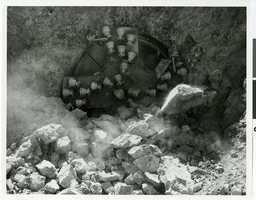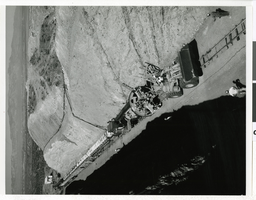Search the Special Collections and Archives Portal
Search Results
Nevada State Senator Bob Coffin Records of the Kathy Augustine Impeachment Trial
Identifier
Abstract
Nevada State Senator Bob Coffin Records of the Kathy Augustine Impeachment Trial (2004) contains exhibits, testimonies, witness lists, questions posed, computer forensic evidence, correspondence, newspaper clippings, magazine articles, and printed legislative materials. Also included are 21 DVD recordings of the trial.
Archival Collection
Maryellen Vallier Sadovich Papers
Identifier
Abstract
The Maryellen Vallier Sadovich Papers include transcripts and handwritten and photocopied documents pertaining to early Nevada history from 1852 to 1934. Documents include information about the boundaries of Nevada; mail service contracts between Utah and California; documents from the Department of the Interior, Office of Indian Affairs concerning reservations in Southern Nevada; a copy of Gibb's Phonetic alphabet of Southern Nevada Native American languages; maps of tributaries in Southern Nevada; notes about the National Archives photographic holdings of Nevada; and documents from mining reports.
Archival Collection
Thunderbird Hotel Records
Identifier
Abstract
The Thunderbird Hotel Records are comprised of material that documents the work of the Las Vegas, Nevada hotel's entertainment department from 1964 to 1973. The records consist of photographs, memorandum, newspaper clippings, and publicity materials.
Archival Collection
Las Vegas PRIDE Parade Records
Identifier
Abstract
The Las Vegas PRIDE Parade Records (2016-2017) contain administrative files that document how the Southern Nevada Association of PRIDE, Inc. (SNAPI) organized the 2016 and 2017 PRIDE parades in Las Vegas, Nevada. Materials include correspondence with event organizers, parade participant information, and PRIDE event guides.
Archival Collection
Paul E. Meacham Faculty Papers
Identifier
Abstract
The Paul E. Meacham Faculty Papers (approximately 1977-1998) are comprised of articles and reports relating to the development of community colleges as well as organization and administration in higher education throughout the United States. The collection also includes course readers for EDA 731 Organization and Administration in Higher Education taught at the University of Nevada, Las Vegas.
Archival Collection
Larry A. Strate Faculty Papers
Identifier
Abstract
The Larry A. Strate Faculty Papers (approximately 1985-2023) are comprised primarily of scholarly articles and papers from the Pacific Southwest Academy of Legal Studies in Business annual conferences written by Strate during his time as a business law professor at the University of Nevada, Las Vegas (UNLV). Materials also include personal memoir written by Strate about his life.
Archival Collection
Marisa Rodriguez oral history interview
Identifier
Abstract
Oral history interview with Marisa Rodriguez conducted by Maribel Estrada Calderón, Monserrath Hernández and Claytee D. White for the Latinx Voices of Southern Nevada Oral History Project.
Marisa Rodriguez discusses her childhood and living in North Las Vegas as a teenager; she was born in Chicago, Illinois, moved to Mexico with her family at a young age, and returned to the United States at age 12. She recounts what it was like acclimating to American life, learning English, and studying abroad in Spain before becoming a law student. Marisa attended the William S. Boyd School of Law and is currently a civil litigator in Las Vegas.
Subjects discussed include: La Voz Hispanic/Latino Law Students Association at the William S. Boyd School of Law; Huellas mentorship program.
Archival Collection
Kathy Augustine Papers
Identifier
Abstract
The Kathy Augustine Papers date from 1977 to 1997 and are comprised of the documents of Augustine's political career as an Assemblywoman and State Senator in Nevada. The collection includes political correspondence relating to State Senate Bills (SB) and Assembly Bills (AB), material from Augustine's Assembly campaign, and newsletters from Desert Express, Sage, and Sagehen. The collection also includes other correspondence related to Augustine's time in office, and social events.
Archival Collection

Photograph of the "Mole" Jarva Tunnel Borer breaking through the tunnel on the Las Vegas River Mountain Project, Las Vegas, Nevada, circa 1968-1971
Date
Archival Collection
Description
Image

Photograph of the 988 caterpillar loader towing mole and conveyor to the tunnel portal used on the Las Vegas River Mountain Project, Las Vegas, Nevada, circa 1968-1971
Date
Archival Collection
Description
Image
